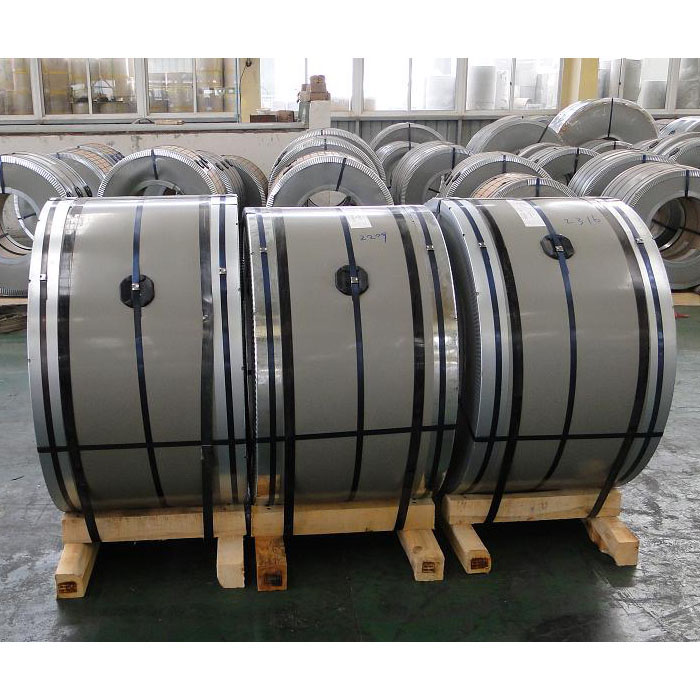

The coiling process of cold-rolled stainless steel coils usually includes the following steps:
Rolling process:
During the cold rolling process, the steel strip passes through the cold rolling mill to compress and stretch the thickness, becoming thinner and smoother. During this process, the stainless steel strip is heated to room temperature and processed through a series of rollers.
Coiler start:
After rolling, the steel strip is fed into the coiler. The coiler is a device that rolls the steel strip into a coil. In order to ensure that the coil is formed evenly and stably, the coiler uses a system to control tension and speed to control the winding process of the cold-rolled coil.
Control tension and speed:
The coiling process requires precise control of tension and speed. Tension control ensures that the steel strip does not become loose or too tight during the winding process, while speed control ensures that the flow rate of the steel strip matches the winding speed to avoid stretching or wrinkling.
Coil layering and tension adjustment:
During the coiling process, it is usually necessary to avoid overlapping or disordered layers of coils. To this end, a tension adjustment device is used to ensure that each layer of steel strip can be evenly wound onto the core. Some equipment also uses tension sensors and automatic control systems to further optimize this process.
Finished coil shaping:
During the winding process, the steel coil will continuously adjust the tension of the coil core to keep the coil shape uniform and round. Finally, after multiple adjustments, the coil reaches the ideal shape and density and becomes a qualified cold-rolled stainless steel coil.
Coil cutting and handling:
Once the cold-rolled stainless steel coil is formed, the coil may be cut, marked or packaged according to needs for transportation or further processing.
The entire winding process needs to be precisely controlled to ensure the quality of the cold-rolled stainless steel coil and avoid defects such as surface damage, curling, offset and other problems.
